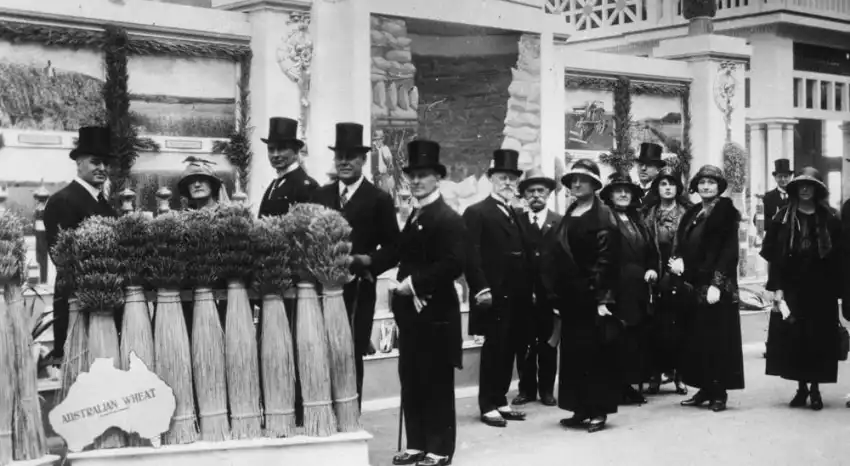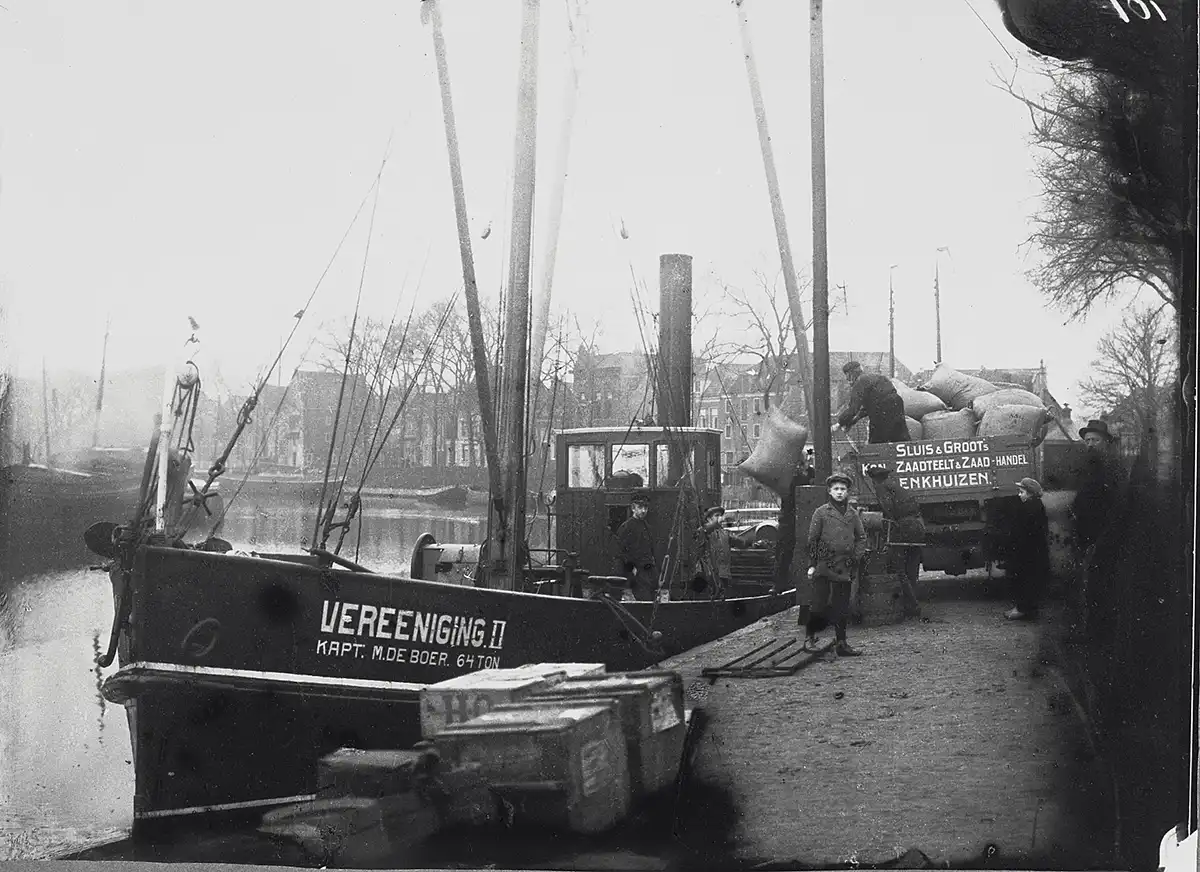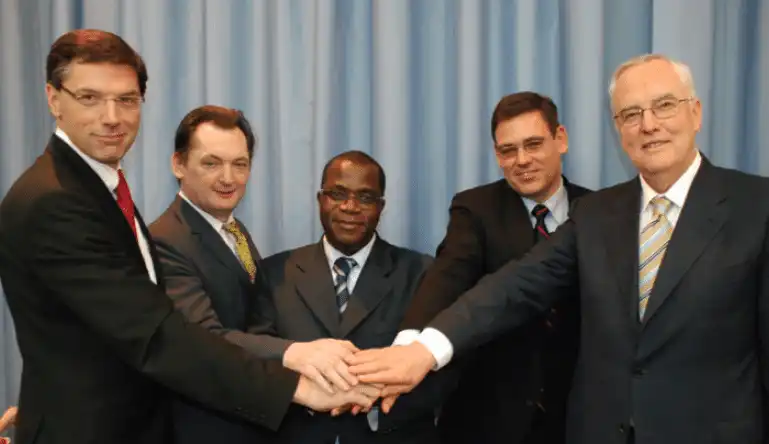World Seed Congress marks ISF Centennial.
EDITOR’S NOTE: Seed World is incredibly grateful to Niels Louwaars for his leadership and his innumerable contributions to the global seed sector and to our publications. Louwaars is a Dutch expert in policies surrounding seed. He has worked extensively in the field of plant breeding and seed systems, focusing on issues related to intellectual property rights, access to genetic resources and the role of public and private sectors in seed development and distribution. He has been involved in various international organizations and initiatives, contributing to the development of policies and frameworks that support sustainable agriculture and food security. Currently, he is leading Plantum, the Dutch seed association.
The International Seed Federation was formed in 2002 following the merger of International Association of Plant Breeders for the Protection of Plant Varieties (ASSINSEL) and the Federation Internationale du Commerce des Semences (FIS), bringing together their respective areas of expertise: plant breeding and seed trading. This article is a shorter version of Louwaars’ full ISF history available in Seed World Europe 2024 issues 1 and 2 and online at https://www.seedworld.com/europe/2024/02/02/four-quarters-of-isf-and-onwards-to-the-fifth/.
A centennial anniversary urges us to look at the future of ISF. Knowing where we come from can certainly help. So, let’s have a look at how ISF evolved from its double origins: FIS and ASSINSEL before we try to glimpse at the future. ISFs history can be split into four almost equal phases with specific identities while ISF took on additional roles.
Phase one – (self) regulation and platform
The reason to get together in and establish FIS in 1924 and for the first 25 years was need for self-regulation at the global level. Seed was increasingly traded internationally over larger distances, notably forages and vegetable seeds, and it suffered from rogue ‘seed’ in the market. So a major first initiative was the formulation of the International Trade Rules, indeed established first for forage seeds in 1929. Rules require enforcement, which led to an arbitration system one year later, following developments in the League of Nations. ISTA defined the first international standards for seed testing in 1931 contributing to the same goal.
A second association saw the light during this same period. Private sector plant breeders established ASSINSEL in 1938, an association specifically aimed at providing breeders with the necessary returns on investment. The seed traders’ association FIS was initially not considered an ally in this goal, as it would be the seed producers and traders to pay for the licenses that ASSINSEL was aiming at. The breeders required not self regulation like the trade rules, but governments to grant intellectual property rights to them.
Both associations provided for a platform for seedsmen to meet and discuss joint issues which attracted quickly growing numbers to the conferences.
Phase two – after WWII: positioning in emerging institutions.
The importance of global institutions was realized at the very start of FIS when the ISTA conference in Cambridge was used to gather for the first time. Many global institutions saw the light in this second period and the sector needed to position itself. The most important was the establishment of the Food and Agriculture Organization of the United Nations (FAO) in 1945 to showcase seeds as an important component of its objective to defeat hunger. FAO became very important in (public) seed programs as part of the Green Revolution, which after several decades, led to private investments in many countries. FAO established the International Plant Protection Convention (IPPC) in 1951, which was important for the international movement of seed. The Seed Schemes for varietal certification of seed quality (by OEEC in 1958 – later OECD) standardized procedures that added to a solid basis for international seed trade. The work of ASSINSEL resulted in the creation of a new international organization, UPOV to provide rights for breeders, which allows for much larger investments in the seed sector. Through positioning the seed sector in these international forums FIS and ASSINSEL also contributed to the professionalization of the seed sector.
Phase three: scientific development from the 1970s onwards
The sector became increasingly entwined with scientific developments in this period. Cell-, developmental and eventually molecular biology entered the realm of plant breeding, building on tissue culture techniques that had been initiated in the 1960s. Oil and pharmaceutical companies, followed by agrochemical producers, saw the opportunities of biotechnology and started to take over significant numbers of family-based breeders and seed producers. Science and technology have continued to shape the sector ever since. Marker-assisted breeding and now genome editing complement the ‘art’ of plant breeding. Also seed technology got a boost from chemical, technical, and more recently biological innovations. Along with these developments, new policies emerged. New interpretations of patent law (1980 in the USA), new ideas about national rights over genetic resources (CBD, 1993) rules on GMOs (Cartagena Protocol, 2000), and free (WTO, 1994) and facilitated (ICT) trade contributed to changes in the structure of the sector. Internationally operating companies were increasingly able to provide the FIS secretariat with knowledge and support, but at the same time this provided questions about how to properly represent the whole seed sector in all its diversity. The role of national associations in ISF is still essential.
The new millennium: supporting associations at the global level
First of all, the traders and breeders joined forces and formed ISF in 2002 after many years of intensified cooperation between FIS and ASSINSEL. Further, globalization of association work was the key new development in this phase. The number of national associations increased, expanding ISFs membership, and regional associations emerged. APSA (back in 1994 at the initiative of FAO). ESA, now Euroseeds (2000). In Africa AFSTA (2005) in the Americas SAA (2005), and in Central Asia CASA (2009).
All this led to a wider diversity in ISF membership, and an additional role responding to questions for support by the fledgeling organizations. The geographical spread also contributed to the realization of the importance of communication both with the extended membership and towards the outside world.
The Centennial
ISF evolved in line with – and influencing – the global developments; ISF reinvented itself on several occasions; roles and structure changed to give space to the changing membership; staff and Congresses expanded. The roles of all four phases have been combined in the current ISF-organisation: Trade Rules and Arbitration (Phase 1), positioning the sector in global institutions (Phase 2), responding to evolving seed sector structure (Phase 3) and continuing global expansion through national and regional associations (Phase 4). Currently, the roles may be formulated with the following words i) platform for members; ii) Foresight and proactivity; iii) representation; iv) regulating the trade; and v) communication.
Associations are translators. ISF translates the needs of the sector to the language of policy makers and society, while at times it also needs to translate political realities to the business language of the members.
Phase 5: ‘opening up’
The world will continue to evolve; intergovernmental and non-governmental organisations will change and so will technology and relations within value chains, and as a result of this all: the way the seed sector can do business. In all that, seed itself is an agent of change; it helps farmers to adapt to ecological and economic changes and it helps processors and retailers to adapt to changing needs. History has proven that we indeed embrace change, so let’s be open to that in the future.
What will be the key term that we will give to the next phase at the 125th celebration of ISF. A start has been made to make ‘opening up’ the over-arching theme for the next period. The first phase of the next century of ISFs existence will be characterized by communicating beyond the seed sector itself and collaborating with outsiders. This relates forth to the partners in the value chain and to society at large.
We are positioned at the start of all green value chains, providing an essential input for farmers, traders, processors, retailers and eventually consumers. The interests of such chain partners may very well coincide with ours, but conflicts of interest are part and parcel of such relations, be it the distribution of profits along the chain, or the sharing of information. Collaboration along the value chain increases understanding and strengthens the lobby.
Not less important is the need for a stronger connection with society, citizens rather than consumers. They eventually provide us with our license to produce. Showing the societal relevance of the sector and the topics that it lobbies for rather than representing our immediate commercial interests will increasingly dictate our relationship with policymakers. This means that the sector must be open to the interests of ‘others’ in society. This will not always be easy, particularly where the business model of some ‘others’ requires extending conflicts rather than building bridges. It thus also requires us to be open to different ways of communication and the realization that emotions are also part of reality.
Congrats and . . . . Carry On
Congratulations to ISF for having been highly relevant for the seed sector for a century now; congratulations to the membership that had the visionaries who spend their company’s time to start collective action and to continually adapt the ISF to emerging situations and needs. The future is bright when we can continue this journey with wisdom and perseverance.
What is clear is that plants will remain essential for human life and so are the seeds and the international exchange and trade of seeds and related knowledge. We can also predict that the diversity of plant species and of demands by farmers and users will continue to require a diversity of actors in the seed sector that will continue to require a platform to discuss matters, and to organize collective representation and joint services. These will need to be provided at different levels, including the global. So, however the future will look, there will be a need for an International Seed Federation, and it is certain that such federation will have different functions and priorities than today, responding to and co-creating global developments.













